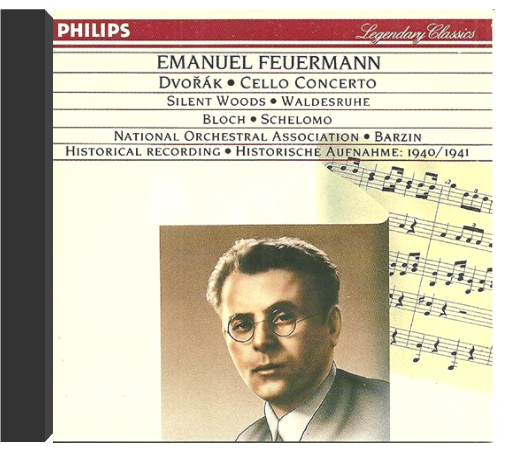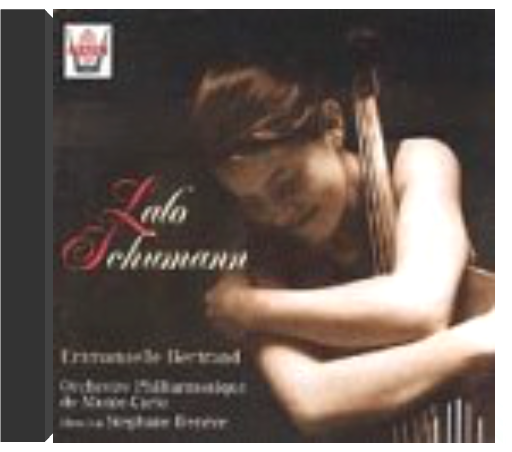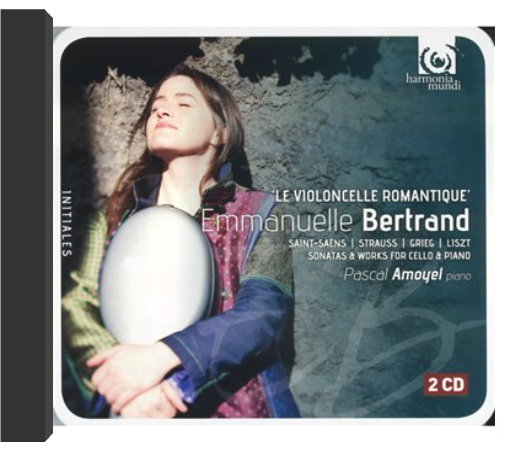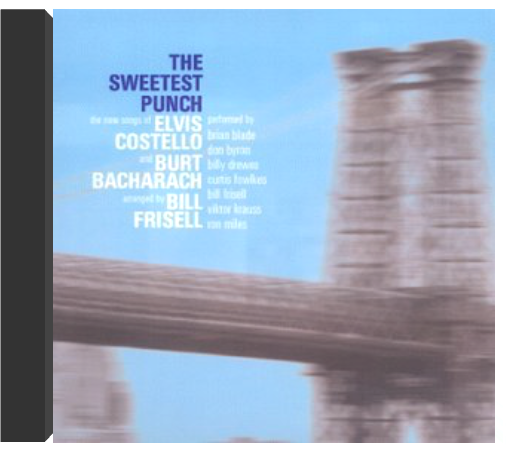 The Sweetest Punch: Songs Of Elvis Costello And Burt BacharachElvis Costello & Bill Frisell The Sweetest Punch: Songs Of Elvis Costello And Burt BacharachElvis Costello & Bill Frisell Guitarist Bill Frisell is first and foremost a song man. He has covered, sans irony, songs by Madonna and John Philip Sousa. He has even been witnessed performing "Beer Barrel Polka" when the mood strikes. His respect for classic songs and great singing has always been evident in his own playing and compositions. One singer Frisell has always respected is Elvis Costello, who was recording Burt Bacharach songs as far back as his Stiff Records days (check out the Live Stiffs anthology). Costello and Frisell make their collaboration on this recording a product of mutual admiration and shared love of Burt Bacharach, an unabashed melodic master. Recording simultaneously with Costello and Bacharach's Painted from Memory, Frisell arranged the same tunes working from bare piano-vocal demos. His small group orchestrations stretch but never break the songs, revealing a deep empathy for their mood and meaning. Bill and company (Brian Blade, Don Byron, Viktor Krauss, and others) are equally at home with the music's lyrical nature and quirky construction—both Bacharach trademarks. Costello and Cassandra Wilson add a few guest vocals, but it is the voice of Frisell's guitar and arranging that shines through here. —Michael Ross 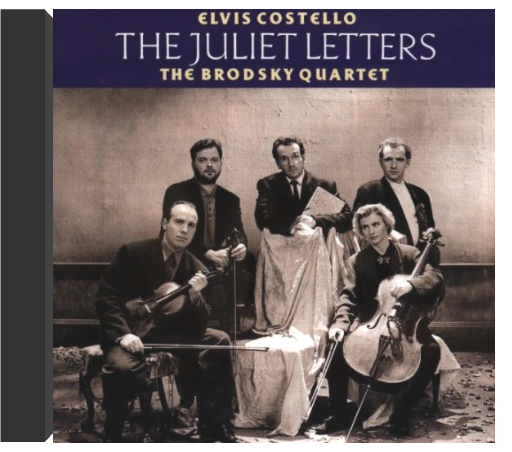 Elvis Costello: The Juliet LettersElvis Costello and The Brodky Quartet Elvis Costello: The Juliet LettersElvis Costello and The Brodky Quartet Good on Elvis for risking the ridicule of a blinkered pop world with this unprecedented (for him, certainly, and most anyone short of Kurt Weill) and quite lovely album of bitchy, wise, and funny art songs accompanied by strings. His freshest, most evolved work in years. —Jeff Bateman 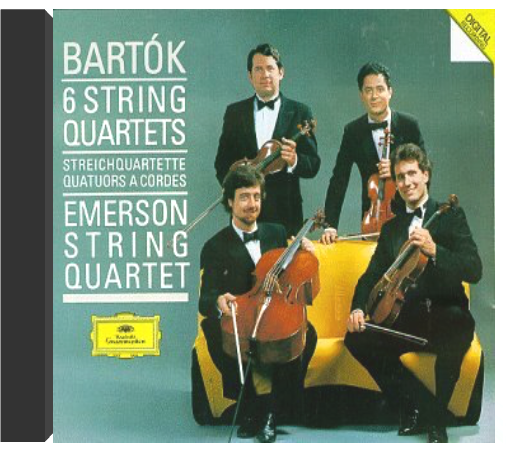 Bela Bartok: The 6 String Quartets - Emerson String QuartetEmerson String Quartet Bela Bartok: The 6 String Quartets - Emerson String QuartetEmerson String Quartet The six quartets of Bartók have been well represented on record, far better than the six of Schoenberg or the fifteen of Shostakovich. The choice on Compact Disc, however, is an easy one, for the Emerson Quartet not only plays the music better than any other ensemble, but gets all six essays onto two discs. Making roses out of what must seem more like a collection of thistles to most others who attempt to play the set, the Emerson players show the kind of ensemble polish that caused one European critic to complain, "too smooth.... I like my Bartók rougher." But awkwardness and rhythmic uncertainty, which have made many a lesser group sound rough in this music, should not be confused with expressive edge, which the Emersons bring to the music in full measure. Their readings are extraordinarily revealing, high-intensity, not at all for the faint of heart. With the odd-numbered quartets on one disc and the even on the other, each CD is a "microcosmos" of the whole set. The sound quality is excellent throughout. —Ted Libbey 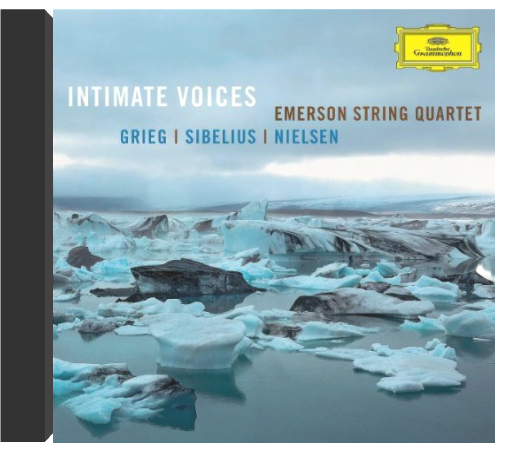 Intimate VoicesEmerson String Quartet Intimate VoicesEmerson String Quartet Both Grieg and Sibelius composed only one string quartet; along with these, this recording features a brief work by Carl Nielsen entitled "At the Bier of a Young Artist." The Nielsen was originally a more elaborately scored work, but the Emersons have successfully reduced it. It's a fine study in dark, sentimental Romanticism. The Grieg is an easier-going piece than one might imagine given its minor key tonality, with plenty of melodies, a lovely dance in the second movement and a livelier one in the finale. The Emersons play it crisply, perhaps purposely avoiding its gloom. The D minor Sibelius Quartet is a joyless piece, anxious when it isn't disturbingly dark, and it is played beautifully, with proper gravity, by the Quartet. A handsome disc. —Robert Levine 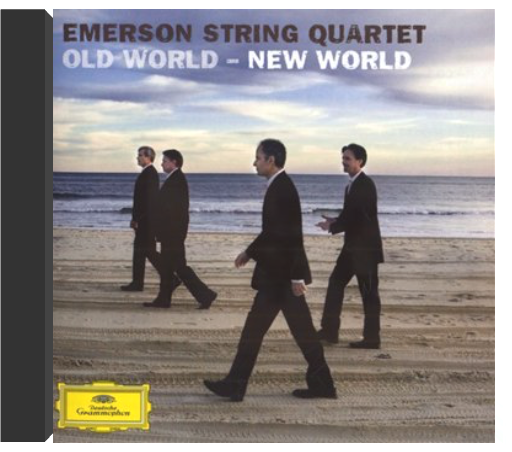 Old World - New WorldEmerson String Quartet Old World - New WorldEmerson String Quartet The Emerson String Quartet, winner of 9 Grammys® is releasing an album of works never recorded during the course of their 30-year career. The release of Old World-New World has been a long cherished dream and features the Emerson's favorite Dvorak middle and late string quartets. A bonanza of romantic melody, not a note on this 3-CD release has ever before been recorded by the Emersons. Also includes Dvorak's youthful and infrequently performed song cycle on the subject of love, Cypresses, which provides a compelling thematic trove for several of these enamoring quartets. 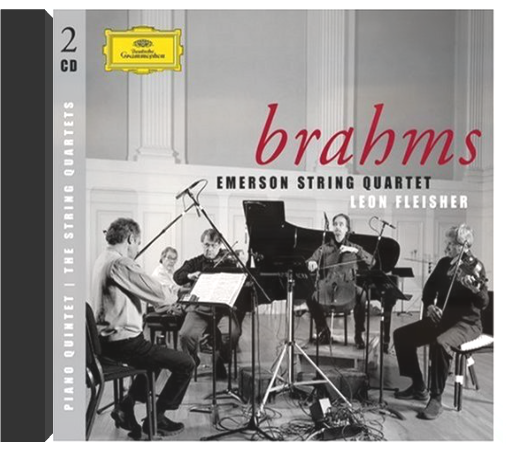 Piano Quintet in F Min / Complete String QuartetsEmerson String Quartet Piano Quintet in F Min / Complete String QuartetsEmerson String Quartet This handsome set of Brahms's chamber music features the stunning Emerson Quartet, and in the Piano Quintet, the pianist Leon Fleischer, happily recovered from a very lengthy crippling illness. The Quintet is singingly, lyrically played, with Brahms's long melodies the focal point. It's a beautiful performance, with the Emerson seemingly listening to and following Fleischer. The Quartets are performed with lush tone, with the Op. 51, no. 2, sounding particularly intense, with each dynamic change pointedly underlined. Op. 51's second movement (Romanze) makes the listener wish Brahms had set a text to the music — it is played with exquisite lyricism. The B-flat major Quartet is vibrant, with the final movement's variations, colored by the viola, so clearly played that one can hear the echoes of the Quartet's first movement. A fine pair of CDs. —Robert Levine 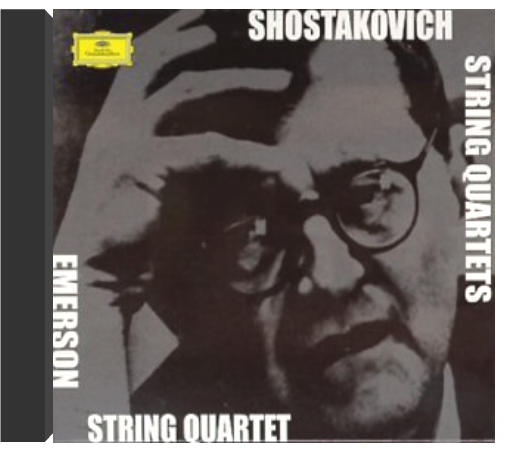 Shostakovich: Complete String QuartetsEmerson String Quartet Shostakovich: Complete String QuartetsEmerson String Quartet Can an American string quartet grasp the power of Shostakovich's 15 string quartets? By the sounds of this incredible cycle, the answer is a resounding Yes! Capturing every nuance of Shostakovich's emotionally gripping, sometimes humorous, often angst-filled compositions, the Emersons deliver very likely the finest performances of these works available. —Jason Verlinde 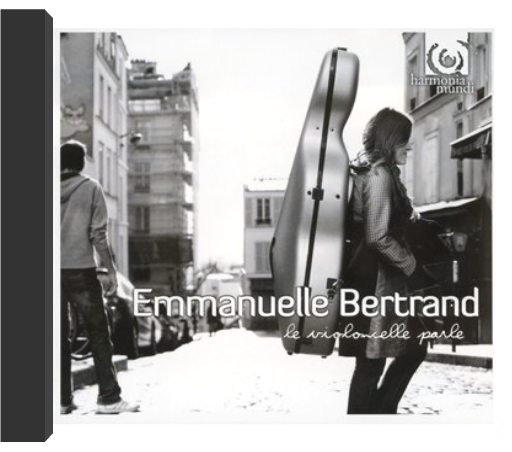 Le violoncelle parleEmmanuelle Bertrand Le violoncelle parleEmmanuelle Bertrand On Le violoncelle parle (the Cello Speaks), Emmanuelle Bertrand performs a wide-ranging selection of compositions for solo cello. The works Bertrand has chosen speak to the idioms of each of the specific composers cultural and musical backgrounds. Featured are Spaniard Gaspar Cassadó s Suite for Solo Cello, British composer Benjamin Britten s Suite No.3 for Solo Cello as well as Frenchman Pierre Amoyel s Itinérance and Hungarian Zoltán Kodály s Sonata for Solo Cello. In Bertrand s hands, the cello truly speaks and takes us beyond geographical boundaries and straight to the heart of the language of cultural inspiration. 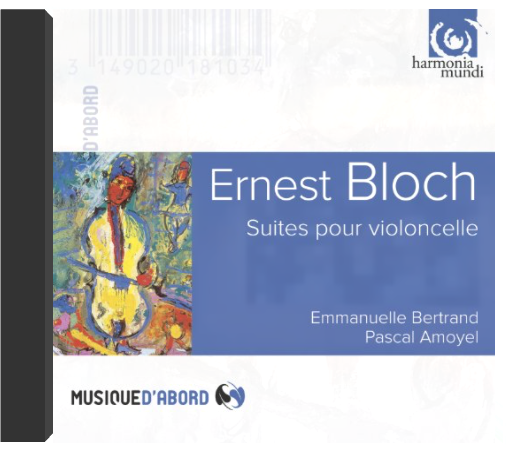 Bloch: Cello suites, Meditation hebraique, From Jewish LifeEmmanuelle Bertrand, Pascal Amoyel Bloch: Cello suites, Meditation hebraique, From Jewish LifeEmmanuelle Bertrand, Pascal Amoyel This budget priced reissue featuring cellist Emmanuelle Bertrand and pianist Pascal Amoyel offers chamber music rarities by Ernest Bloch. The rhapsodic Meditation hebraique is imbued with the Jewish melodies and rhythms that made Bloch famous in the early twentieth century. Similar intensity of sound is to be found in his three Suites for solo cello, which make use of forms from Baroque music. |
 Made with Delicious Library
Made with Delicious Library

